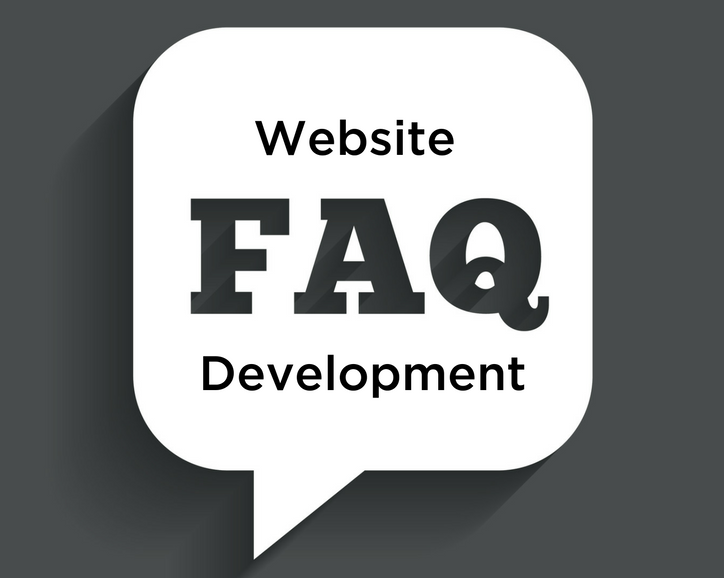
Listed below are some popular questions we’re often asked about website development. While we don’t profess to have all the answers, we have a good handle on the inquiries listed here.
Have questions not listed here? Please contact us and we’ll be happy discuss any other concerns.
What is a responsive website?
Responsive design refers to the process of making websites mobile friendly. A responsive site is programmed so its content layout automatically adjusts to fit any size electronic device (i.e., desktop, laptop, tablet, phone). Before responsive design came along, many businesses maintained separate websites for mobile and non-mobile access; otherwise, visitors had to view tiny, scaled-down versions of desktop layouts on their smaller screens.
We’ve heard that you only get seven seconds to tell your story on a home page. How do we possibly do that?
Old-school wisdom says that a website must convey an organization’s entire story in just a few seconds, before visitors lose interest and leave. But if your company is too remarkable to sum up in mere seconds, you’ll want to encourage visitors to stick around and discover everything you have to offer.
With a mix of relevant information and compelling design, you can create a sticky website that engages visitors. Remember, it’s not a race to tell your story fast, but to quickly capture your audience’s attention so you can tell it well.
How do we get all our vital information “above the fold?”
Raise your hand if you remember reading printed newspapers. Nobody? Well, back in the day, newspaper editors placed their lead stories and photos at the top of the first page, above the paper’s fold. In website design, above the fold refers to the segment of a webpage that visitors can view without scrolling. Conventional wisdom suggests that important information and calls-to-action should appear above the fold—or, more accurately, above the scroll.

That school of thought has plenty of critics, and for good reason. With today’s varying screen sizes and news-feed web designs, Internet users are accustomed to scrolling. Therefore, what’s really important is intriguing your visitors to scroll in the first place. Create great content, and your users will find it.
What are the best fonts to use for a site frequented by seniors?
According to the National Institute on Aging (NIA), sans serif fonts offer the best online readability for aging adults. Sans serif typefaces—fonts such as Arial, Tahoma, Helvetica, and Verdana—are free of decorative tails at the end of strokes.
The NIA also recommends setting body text at 16 pixels or more in size and to avoid condensing spaces between characters. Text should appear in dark colors, mixing upper and lower cases, and be contrasted against a light background.
It’s worth noting that the NIA suggests using serif fonts in books, magazines, brochures, and other printed materials that contain large amounts of text.
Do we really need a mobile friendly website?
Yes, but don’t just take our word for it. Google’s search algorithms now factor a website’s mobile friendliness into its rankings. That means websites optimized for mobile devices appear higher in Google search results.
What’s more, in the coming months, Google will create a separate mobile directory as its primary index for responding to search queries. The company will still maintain a desktop index as well, but it will be less current than the mobile version.
So, yes: if you want your website to be relevant with major search engines such as Google, it had better be mobile friendly.
Do we have too much text?
Probably. Research shows that users only read between 20 and 28 percent of the words on an average webpage. Indeed, few visitors read a site’s information word-for-word; 79 percent simply scan the page.
Your website should include limited, easy-to-scan text. Highlighted keywords, informative sub-headings, and bulleted lists all let readers peruse your page quickly. And restricting the number of words ensures that your site contains plenty of eye-pleasing white space.
As with most things in life, quality is better than quantity when it comes to web text.
How often should we get a new website?
Short answer: As often as it takes to keep up with significant technology changes.
Longer answer: In the past few years, there have been drastic changes in website technology and trends. For example, sites built using Flash became obsolete when Apple stopped supporting the platform on its devices. And, as users began relying more heavily on smartphones for Internet access, web developers began adapting sites to be mobile friendly. Those types of technology changes tend to drive new website development.
There are other reasons for redesigning a website, such as featuring new branding initiatives, incorporating design trends, or making the site easier to maintain internally. In today’s rapidly changing online world, if you suspect that you need a new website, then you probably do.
What services should we expect when hiring a website developer?
You should expect the same services from a website developer as you’d expect when hiring a full-service advertising firm. In other words, a professional developer should not only deliver a trendy, functioning website, but also provide webpage copywriting, photography services, video production, and overall marketing advice.
Let’s face it, a website is vital to your branding. It needs to be your company’s top salesperson. For that reason, its development requires expertise that goes far beyond writing code.
So, hire more than a website developer; hire a marketing specialist.

